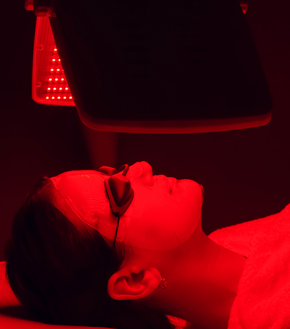Ever woken up with a stiff shoulder that makes reaching for a coffee cup a chore? Or felt a nagging knee pain that tells you “not today” when you think about a walk? You’re not alone. So, what are the best physiotherapy techniques to get rid of these everyday aches and get you moving freely again?
The good news is that modern physical therapy isn’t just for athletes or post-surgery recovery. It’s a powerful toolkit for anyone, and we’re about to walk you through the top physiotherapy techniques that experts use to restore movement and melt away pain.
Let’s dive into these five transformative approaches that can help you feel stronger, more flexible, and back in control of your body.
So, we’ve talked about those daily aches and pains. But what exactly do we mean when we talk about the most common physiotherapy techniques? Simply put, they are the tools and methods your therapist uses to help your body heal itself.
Think of it like this: if your body is a complex machine, a physiotherapist is a master mechanic. They don’t just oil the squeaky hinge; they figure out why it’s squeaking in the first place. These types of physiotherapy techniques are designed to do precisely that—restore your mobility, relieve persistent pain, improve your strength, and support your body’s natural rehabilitation process after an event like a stroke or surgery.
Now that you know what these techniques are all about, let’s explore the top physiotherapy techniques that form the backbone of effective treatment. These are the methods that consistently deliver results, and understanding them will show you just how your therapist plans to help you move and feel better.
Remember that stiff shoulder we mentioned? This is often the first line of defense. Range of motion exercises are precisely what they sound like—movements designed to help your joints move freely through their full, intended potential.
These aren’t one-size-fits-all. Your therapist might start by gently moving your arm for you (passive), then help you as you try to move it yourself (active-assisted), and finally guide you to do it completely on your own (active). This gradual approach is especially crucial for conditions like a frozen shoulder, where specific physiotherapy techniques for frozen shoulder are very important to carefully stretch the joint capsule. It’s equally important for gentle post surgery recovery exercises. The goal is simple: to lubricate the joint, ease stiffness, and prevent muscle wasting, safely guiding your joint back to health.
Once movement becomes easier, the next step is to make it stronger. This is where physical therapy exercises come into play, acting as the building blocks for a resilient body. Think of these physiotherapy exercises as targeted training for your muscles, using resistance bands, light weights, or even your own body weight.
So, what kind of exercises recommended by physiotherapists will you encounter? It could be leg lifts to stabilize a weak knee or specific arm movements to support a recovering shoulder. For individuals rebuilding their lives after a neurological event, these physiotherapy techniques for stroke patients are vital, helping to re-establish brain-to-muscle connections and restore functional strength. This phase is all about reinforcing your body’s framework so you can confidently return to your daily activities.
Sometimes, your muscles and joints need a more direct, hands-on approach to unlock deep-seated tension. This is the realm of manual therapy, a collection of best physiotherapy techniques where your therapist uses their skilled hands to diagnose and treat your body directly.
Through methods like targeted massage, gentle joint mobilizations, and myofascial release, they work to break down scar tissue, improve blood circulation, and release muscles that have been tight for months. If you’ve ever had a persistent knot in your back that just wouldn’t loosen, this approach can offer profound relief. It’s a deeply therapeutic process that addresses the root of your pain, preparing your body for the active work of the physical therapy exercises we just discussed.
The field of physiotherapy is always advancing, integrating technology to accelerate healing. Many people are curious about the new physical therapy techniques 2025 is seeing, and much of that innovation is in this category. These modalities use various forms of energy to stimulate your body’s innate healing processes.
You might experience therapies like ultrasound to soothe deep tissue inflammation, electrical stimulation to gently contract and strengthen weakened muscles, or even shockwave therapy to break down chronic, stubborn scar tissue. For respiratory issues, specific chest physiotherapy techniques such as guided breathing devices or percussion can be used to help clear the lungs and improve function. These physiotherapy techniques are particularly effective for reducing swelling, managing acute pain, and tackling persistent conditions that haven’t responded to other treatments, offering a non-invasive path to recovery.
The final piece of the puzzle is about integrating your newfound strength and mobility back into your life. This section focuses on retraining your body for the real world, which is especially important for physiotherapy techniques for stroke patients or anyone who has felt unsteady on their feet.
This involves balance training to prevent falls, vestibular rehabilitation to conquer dizziness, and functional movement practice that mimics everyday tasks—like getting up from a chair or climbing stairs. It’s the ultimate goal of therapy: to make you feel safe, coordinated, and confident in your own body as you move through your day.

The work you do in the clinic is powerful, but the real, lasting change happens when you take charge of your recovery every day. This is where smart physiotherapy tips at home become your secret weapon. The goal isn’t to become your own therapist, but to create a supportive environment that reinforces the healing process.
So, what do effective home physiotherapy tips actually look like? Here are a few foundational strategies to build upon the work you do with your therapist:
Remember the foundational work we discussed earlier? These home strategies are what build upon that solid base, turning the gains from your sessions into your new normal.
From restoring simple movement with gentle stretches to rebuilding strength and balance for everyday life, these five physiotherapy techniques offer a clear path out of pain and back to the activities you love. Each method, whether hands-on or exercise-based, plays a unique role in guiding your body toward healing, proving that effective recovery is both a science and an art.
Ready to take the next step? At Stretch-abilitation, our professional Physiotherapy Services are designed to guide your body’s recovery to its best possible shape, helping you live a longer, healthier, and more active life. Have a question or are you ready to begin? Give us a call at (341) 221-1070 or visit https://stretchabilitation.com/physiotherapy/ to learn more about how we can craft a personal recovery plan for you.
Some of the most common physiotherapy techniques include manual therapy, therapeutic exercises, balance training, electrotherapy, and specific techniques for conditions like a frozen shoulder.
The 5 D's are a clinical framework therapists use during assessment: Dermatomes (skin sensation), Dermatomes (nerve root function), Deep Tendon Reflexes, Dermatomes (muscle strength), and Differential Diagnosis.
In physiotherapy, the 80/20 rule suggests that 80% of your results come from 20% of the most crucial exercises.
For a frozen shoulder, a combination of gentle manual therapy to loosen the joint capsule and specific, progressive range of motion exercises is often most effective.
The single most important exercise is the one your physiotherapist specifically prescribes for your condition. Its effectiveness depends on you performing it with the correct technique and, most importantly, doing it consistently.
Take the first step toward a stronger, healthier you. Whether you’re overcoming injury, easing pain, or boosting performance, Stretch-abilitation is here to guide you every step of the way. Book your consultation today and start your journey toward full recovery and renewed strength.



At Stretch-abilitation, we’re dedicated to restoring movement, relieving pain, and enhancing performance through advanced recovery therapies. From stone massage and physiotherapy to cryotherapy and infrared sauna, our evidence-based treatments help you heal faster, feel stronger, and live better. Experience expert care, modern technology, and personalised wellness designed to rebuild your strength and restore your balance.
